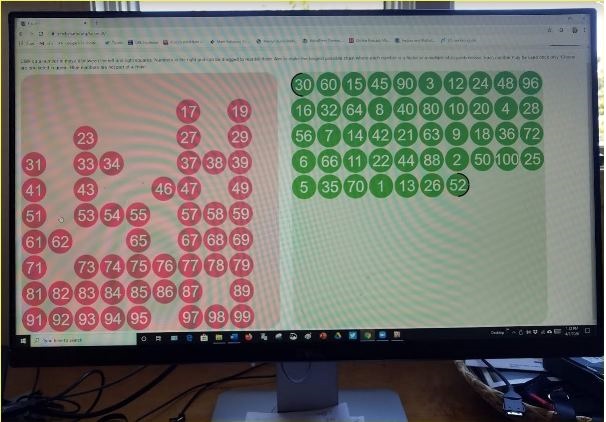I’m hooked on the Factors and Multiples Game. Here’s why.
- It provides practice with factors and multiples.
- It supports thinking strategically and problem solving.
- It works for solitaire or as a two-person game.
- It’s interesting and challenging both for students and adults.
Here’s How to Play
1. Access the game here. To enlarge the game board on my computer screen, I clicked on Tablet version Install in home page.
2. To start play, you choose an even number from the chart on the left that’s less than 50. This becomes the first number in a string of numbers that you’re trying to build. I chose 30 as my start number. I clicked on 30 and it automatically moved to the space on the right.
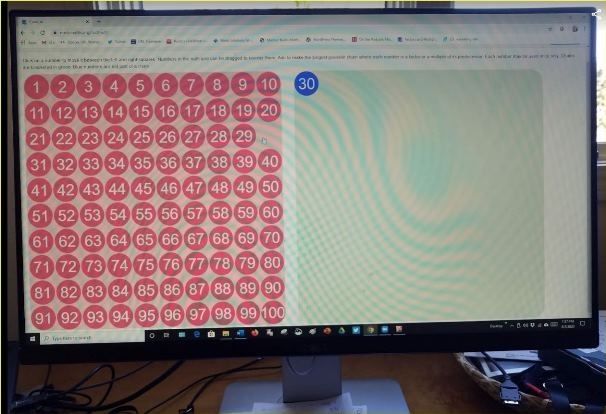
3. For the next number in the string you’re trying to make, you have to choose a number that’s either a factor or a multiple of the start number. I decided to choose a multiple of 30 and clicked on 60. I knew that was an OK move because after 60 automatically moved to the space on the right, the number 30 that was already there turned green and now there were black brackets around 30 and 60 to indicate that it was an OK number string. But it’s a very short string, with just two numbers. The challenge is to extend the number string as long as possible.

4. To continue playing, follow the same rule each time: You choose a number from the number chart on the left that’s a factor or multiple of the previous number you selected. Look below and you can see that after 60 I chose 15, then 45, then 90, and so on, until I made the last choice of 6. Choosing the number 6 was an error because the previous number was 64 and 6 is neither a factor nor a multiple of 64. If you make an error and choose a number from the chart on the left that isn’t a factor or multiple of the previous number, the number still moves over to the right space, but it appears in blue. Below you can see that happened. But all I had to do was click on the 6 again and it returned to its place on the number chart on the left. Then I had the chance to choose another number to continue the string.
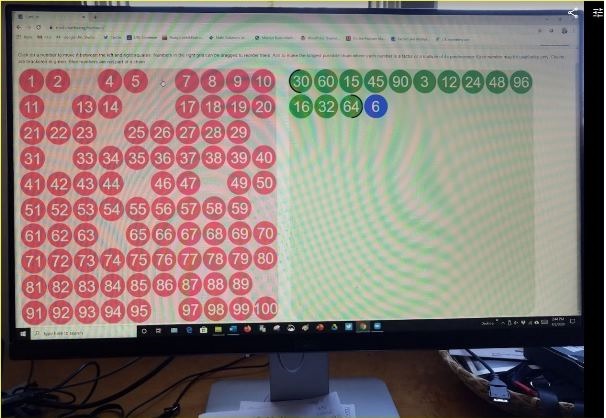
5. I continued choosing more numbers and lengthening my string until I chose the number 52. (See below.) The game is over when it’s not possible to play again because there isn’t a number available on the number chart on the left that’s either a factor or a multiple of the last number you played. I was stuck after I played the number 52 so the game was over. I had made a string of 47 numbers.
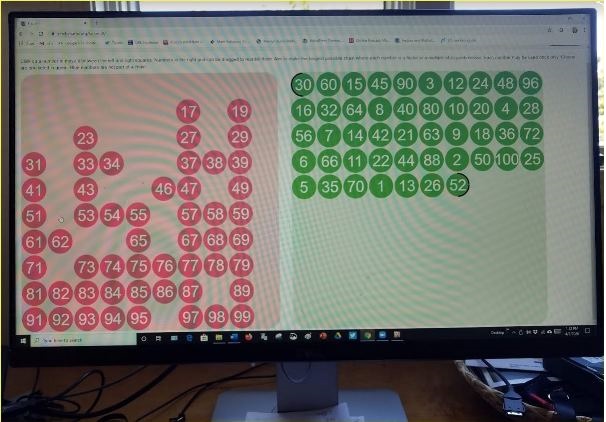
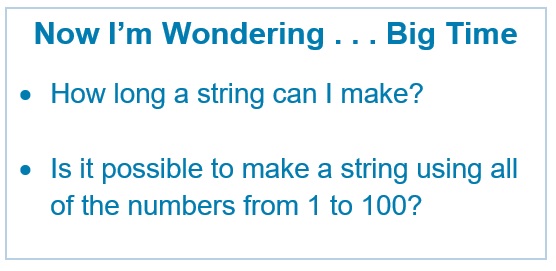
And More Wondering
> What if you could begin with any start number, not just an even number less than 50?
> Do prime numbers have something to do with a strategy? I think so but I’m not sure what.
> And which numbers should I “save” for later use?
About the NRICH site
NRICH provides free online math resources for teachers, parents, and students ages 3 to 18. It’s produced at the University of Cambridge, and its mission is “increasing mathematical understanding, confidence and enjoyment, developing problem-solving skills, and promoting creative and imaginative approaches to maths.” (Yes, it’s “maths” In the UK.) The NRICH site also includes Teacher Notes for thinking about how to use their resources with students.
About Playing Off the Computer
The directions I’ve written describe how to play the game online. It’s possible to play off the computer by printing out the game board, and directions are included for doing this on the NRICH site. But if you can get on the site, it seems best to play it online and get the feedback about incorrect moves.

